Driving safely in all weather conditions requires clear visibility, and windshield wipers are crucial for maintaining that, especially when rain, snow, or debris obstruct your view. With so many options available, selecting the best windshield wipers for your vehicle can feel overwhelming. This guide, crafted by auto experts at keyfobx.com, dives deep into the world of wiper blades to help you understand What Is Best Wiper Blade for your specific needs and driving conditions. We’ve rigorously tested a range of wipers to bring you top recommendations that ensure optimal performance and longevity.
Top Windshield Wipers of 2025: Our Expert Picks
After extensive testing and real-world use in diverse conditions, we’ve identified the top windshield wipers of 2025. Our selections cater to various needs, from all-around performance to budget-friendly options and specialized winter blades. We’ve evaluated factors like blade material, wiper style, durability, and ease of installation to help you determine what is best wiper blade for your car.
Best Overall Windshield Wipers: Rain-X Silicone Endura
For unparalleled all-weather performance and lasting durability, the Rain-X Silicone Endura stands out as the best overall windshield wiper. Priced around $26, these beam-style wipers utilize a premium silicone blade with a graphite coating, significantly outperforming traditional rubber blades in longevity and effectiveness.
Silicone wiper blades are inherently superior due to their resistance to UV radiation, ozone, and temperature extremes, which are common culprits for rubber blade degradation. Furthermore, the Rain-X Silicone Endura blades go a step further by depositing a water-repellent silicone film on your windshield with each use. This effectively creates a Rain-X treatment that causes water to bead up and roll away, dramatically improving visibility in wet conditions.
In our rigorous testing, the Silicone Endura wipers exhibited minimal streaking and operated remarkably quietly, even at high speeds. The performance even seemed to improve over time as the silicone coating became more established on the windshield. For optimal initial performance, running the wipers dry for a few cycles can help accelerate the silicone bedding process.
The robust mounting attachments of the Silicone Endura wipers elevate the pivot point, resulting in increased clamping force against the windshield. While the J-hook attachment mechanism might require a slight learning curve, once mastered, it provides a secure and reliable fit. The inclusion of a locking clasp adds an extra layer of security, preventing the blades from detaching unexpectedly.
Comparing them directly to the premium PIAA Si-Tech wipers, we found virtually no discernible difference in construction or performance, even noting matching serial numbers. Given that the Silicone Endura wipers are often available at a lower price point, they represent exceptional value and are our top recommendation for most drivers seeking what is best wiper blade.
Best Budget Windshield Wipers: AERO Voyager J-Hook
If you’re looking for high-quality performance without breaking the bank, the AERO Voyager J-Hook Wiper Blades are the best budget windshield wipers you can find. At around $17 for a set of two, these beam-style wipers offer incredible value, outperforming traditional budget branch-style wipers in both design and effectiveness.
The AERO Voyager wipers come with a DuPont Teflon coating and even include an extra set of rubber wiper elements and a 1-year warranty, further enhancing their value proposition. This thoughtful design, allowing for squeegee replacement, also makes them a more environmentally conscious choice compared to wipers that require complete replacement.
While the rubber wiper elements of the Voyager blades may not clear water quite as efficiently as silicone blades, the Teflon treatment significantly reduces the squeaking often associated with untreated rubber wipers. The 1-year warranty is a standout feature, especially considering that even premium wipers often have shorter warranty periods. We’ve tested these wipers for six months without any issues, demonstrating their reliability.
The main limitation of the Voyager wipers is their J-hook attachment compatibility. However, if your vehicle uses J-hook wiper arms, the AERO Voyager J-Hook Wiper Blades provide unbeatable performance and value, answering the question of what is best wiper blade on a budget.
Best Branch-Style Windshield Wipers: SilBlade Standard
For drivers in drier climates or those who prefer the traditional branch-style design, the SilBlade Standard offers a unique combination of silicone performance at a budget-friendly price, around $26 per blade. Typically, branch-style wipers are paired with cheaper rubber squeegees, but SilBlade bucks this trend by using silicone, offering enhanced durability and performance.
In our wiper testing, the SilBlade Standard performed admirably, landing in the middle of the pack with minimal streaking and noise. While we noted a slight shuddering at the end of the stroke in slow-motion footage, it was not significant enough to be distracting during everyday driving.
The SilBlades are available in a wide range of lengths (11-28 inches) and fit popular J-hook and pin arm attachments, accommodating a broad range of vehicles. While attachment options might be limited for some European makes, they should fit most common vehicles without issue.
SilBlade also offers their silicone wiper technology in beam-style (FlexBlade) and hybrid (UniBlade) designs for those seeking more modern wiper styles. However, for those specifically looking for a reliable and economical branch-style wiper with the benefits of silicone, the SilBlade Standard is a solid choice, providing a good answer to what is best wiper blade in this category.
Best Beam-Style Windshield Wipers: Bosch Icon
The Bosch Icon wiper blades, priced around $30, are a popular and highly regarded option, and our testing confirms their reputation as the best beam-style windshield wipers. These wipers exemplify the perfected beam design, featuring a smooth flex pattern and an aggressive curvature that ensures consistent contact with the windshield.
While we generally favor silicone wipers for ultimate performance, the rubber compound used in the Bosch Icon blades is exceptionally effective. Our tests showed that these wipers cleared water effectively, even slightly outperforming the Rain-X Latitude rubber wipers in streak reduction. While long-term durability might be a slight compromise compared to silicone, the build quality of the Icons is undeniable.
One of the standout features of the Bosch Icon wipers is their incredibly easy installation. The simple locking clasp mechanism secures the blade with a single motion, making installation and removal significantly easier than many other wipers we tested. This user-friendly design was a welcome relief during our extensive testing process.
In particularly cold and icy climates, rubber wipers like the Bosch Icon can be advantageous. Silicone blades can sometimes become too soft in extreme cold and may tear when encountering ice buildup on an unscraped windshield. For drivers in such environments, the Bosch Icon offers a robust and reliable solution, answering the question of what is best wiper blade for beam-style performance, especially in colder conditions.
Best Premium Windshield Wipers: PIAA Si-Tech
For those who demand the absolute best performance and are willing to invest in premium quality, the PIAA Si-Tech windshield wipers, priced around $36, are the ultimate choice. As mentioned earlier, these wipers appear to be virtually identical to the Rain-X Silicone Endura in construction and performance, but with a few added premium features that justify their higher price point and solidify their position as the best premium wipers.
The PIAA Si-Tech wipers include a windshield preparation pack containing an alcohol cleaner and liquid silicone. This elevates the silicone wiper experience by ensuring a pristine windshield surface for optimal silicone adhesion and water repellency. While you can achieve a similar effect with aftermarket Rain-X treatments, the included prep pack adds convenience and enhances initial performance.
Furthermore, PIAA offers silicone wiper refills for the Si-Tech blades, extending their lifespan and reducing waste. This refill option is not available for the Rain-X Silicone Endura, making the PIAA Si-Tech a more sustainable and potentially more cost-effective option in the long run.
The beam design of the PIAA Si-Tech wipers, like the Rain-X and Bosch models, provides excellent water clearing ability with consistent blade contact and minimal streaking. Noise levels were also among the lowest in our tests. Even as the initial silicone treatment wears, the silicone blades continue to deposit a water-repellent layer, maintaining superior visibility.
While the higher price may deter some, the PIAA Si-Tech wipers offer turn-key premium performance and long-term value, making them the definitive answer to what is best wiper blade when budget is less of a concern.
Best Winter Windshield Wipers: Anco Winter Wiper
Winter weather presents unique challenges for windshield wipers, with snow and ice buildup often hindering performance and potentially damaging blades. While silicone beam wipers like the Bosch Icon perform well in winter conditions, they can be vulnerable to damage from ice. For dedicated winter performance, we recommend swapping to specialized winter wipers like the Anco Winter Wiper Blades, priced around $25.
The Anco Winter Wipers are designed to be sacrificial and withstand harsh winter conditions. Their key feature is a thick rubber sleeve that encases the entire blade, preventing snow and ice from accumulating and hindering wiper function. Our testing in the snowy North Cascades proved their effectiveness in demanding winter environments.
These wipers utilize rubber blade elements, which are more resilient to tearing when run over icy windshields compared to silicone. While rubber may not clear water as effectively as silicone, the Anco Winter Wipers provide adequate performance for winter conditions, especially when combined with a windshield treatment like Rain-X. The wipers themselves are not pre-treated, so windshield treatment is recommended to enhance their performance throughout the season.
The Anco Winter Wipers offer fuss-free connection and compatibility with hook, side-pin, and small/large bayonet-style wiper arms, ensuring broad vehicle compatibility. Swapping to winter wipers like the Anco blades not only provides optimized winter performance but also extends the lifespan of your summer wipers. For drivers in snowy regions, the Anco Winter Wiper Blades are the answer to what is best wiper blade for winter driving.
Other Notable Windshield Wipers
While the wipers highlighted above represent our top picks, several other options are worth considering. These alternatives offer strong performance and may be suitable depending on your specific needs and preferences.
Trico Silicone Ceramic
The Trico Silicone Ceramic wiper blades, priced around $36, are another premium option that rivals the PIAA Si-Tech in performance and features. Their higher price is attributed to advanced materials, including a ceramic coating on the silicone wiper elements designed to minimize friction and enhance longevity.
The wiping performance of the Trico Silicone Ceramic is comparable to the PIAA Si-Tech and Rain-X Silicone Endura, with the ceramic coating potentially extending blade life by reducing friction and wear. Aerodynamically designed with an integrated spoiler, these wipers maintain excellent windshield contact even at high speeds, eliminating shuddering or lifting.
Choosing between the Trico Silicone Ceramic and PIAA Si-Tech often comes down to personal preference, with the PIAA slightly favored for its more aggressive curve and included water-repellent wipes. However, the Trico Silicone Ceramic offers exceptional long-term performance and is a strong contender for what is best wiper blade in the premium category.
Rain-X Latitude Water Repellency
The Rain-X Latitude Water Repellency wipers, priced around $18, occupy a solid mid-tier position, offering a balance of performance and value. These beam-style wipers utilize rubber blades infused with a Rain-X silicone coating, providing enhanced water repellency and smooth operation.
The Rain-X coating on these rubber blades provides a 2-in-1 benefit, applying a water-repellent treatment to the windshield with initial use. While the coating’s longevity may not match dedicated silicone blades or wipe-on treatments, it effectively beads water and improves visibility. In our testing, the treatment lasted for a full summer and fall season in the Pacific Northwest.
The beam design is similar to the Rain-X Silicone Endura but with a more pronounced curve, ensuring good windshield contact at higher speeds. While the attachment mount is slightly bulkier than some competitors, the Latitude Water Repellency wipers offer excellent performance for their price point.
For budget-conscious buyers seeking enhanced water repellency without the cost of full silicone wipers, the Rain-X Latitude Water Repellency blades, especially when paired with Rain-X Washer Fluid Additive, are a compelling option, answering what is best wiper blade in the mid-price range with added water repellency.
Trico Flex
The Trico Flex wiper blades, priced around $17, are another strong budget contender, offering beam-style design at an affordable price. While they utilize rubber wiper inserts, the Trico Flex wipers deliver impressive water clearing performance with minimal streaking in our testing.
Performance-wise, the Trico Flex wipers compare favorably to the Bosch Icon, with the Bosch primarily edging out the Trico due to its superior attachment mechanism. However, the Trico Flex offers excellent performance for its price.
In terms of build quality, the Trico Flex blades feel slightly less robust than higher-priced options, with a plastic frame and mount that may not be as durable long-term. Attachment compatibility is also slightly more limited compared to some other wipers.
Despite these minor drawbacks, the Trico Flex wipers offer dependable performance across various testing conditions and represent an excellent budget choice for drivers who don’t require top-tier performance or live in areas with infrequent precipitation. They provide a solid answer to what is best wiper blade for budget-conscious consumers seeking beam-style performance.
Windshield Wiper Comparison Chart
| Windshield Wipers | Price (Per Wiper) | Wiper Style | Blade Material | Available Lengths |
|---|---|---|---|---|
| Rain-X Silicone Endura | $26 | Beam | Silicone | 14-28” |
| AERO Voyager J-Hook | $8 | Beam | Rubber | 13-28” |
| SilBlade Standard | $26 | Branch | Silicone | 11-28” |
| Bosch Icon | $30 | Beam | Rubber | 13-28” |
| PIAA Si-Tech | $36 | Beam | Silicone | 14-28” |
| Anco Winter Wiper | $25 | Branch | Rubber | 11-24” |
| Trico Silicone Ceramic | $36 | Beam | Silicone | 14-28” |
| Rain-X Latitude Water Repellency | $18 | Beam | Rubber | 14-28” |
| Trico Flex | $17 | Beam | Rubber | 13-32” |
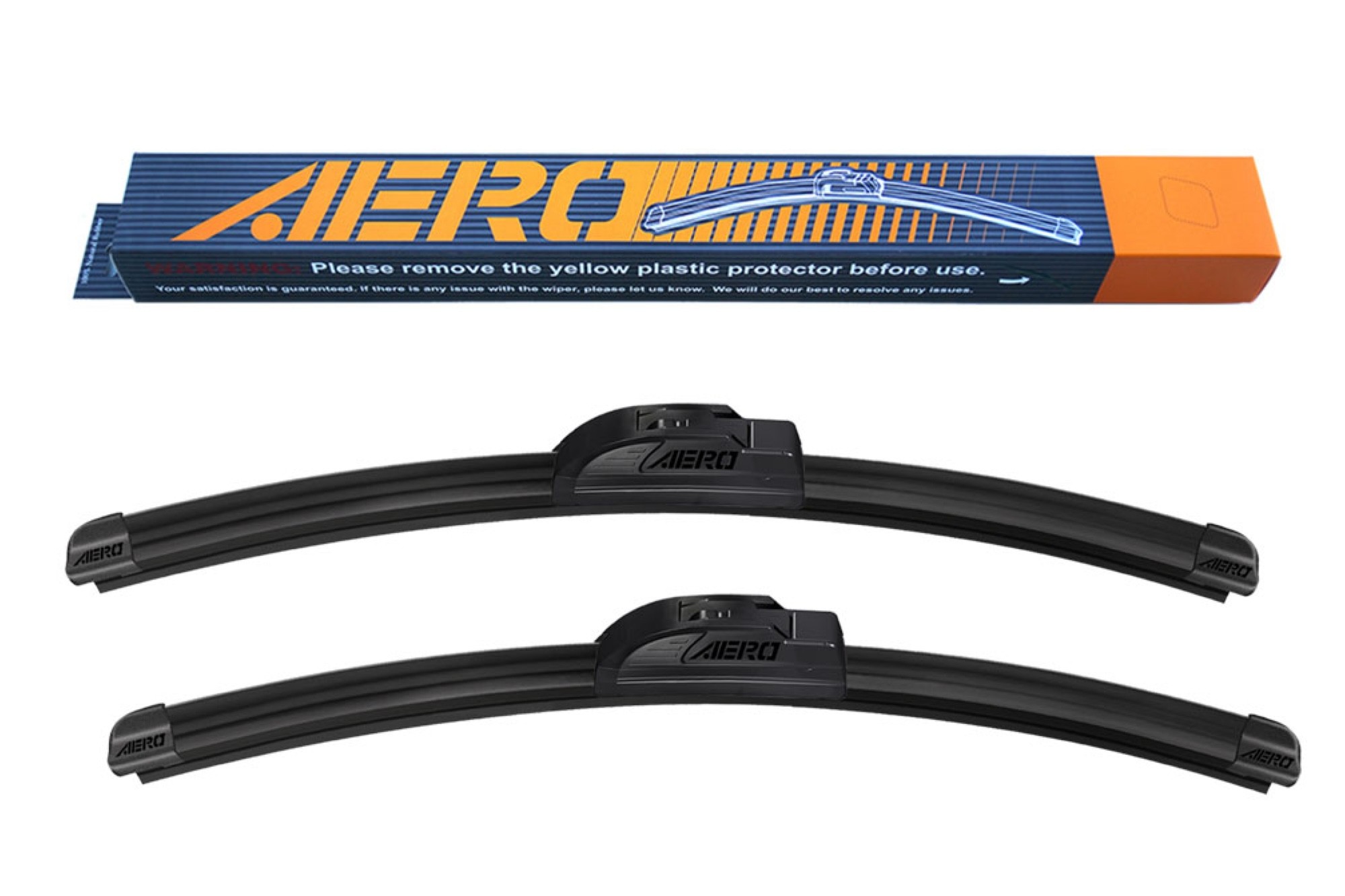

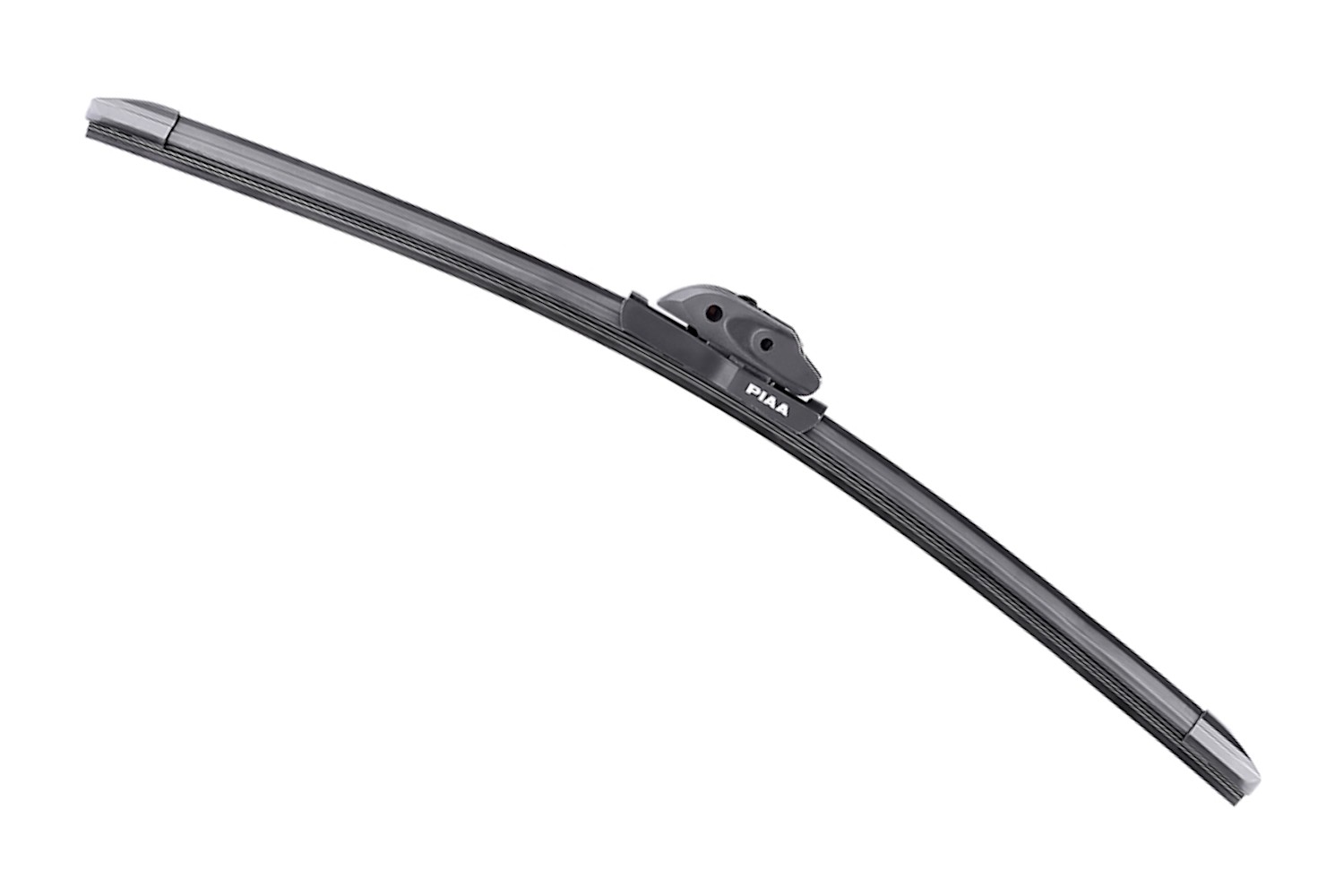
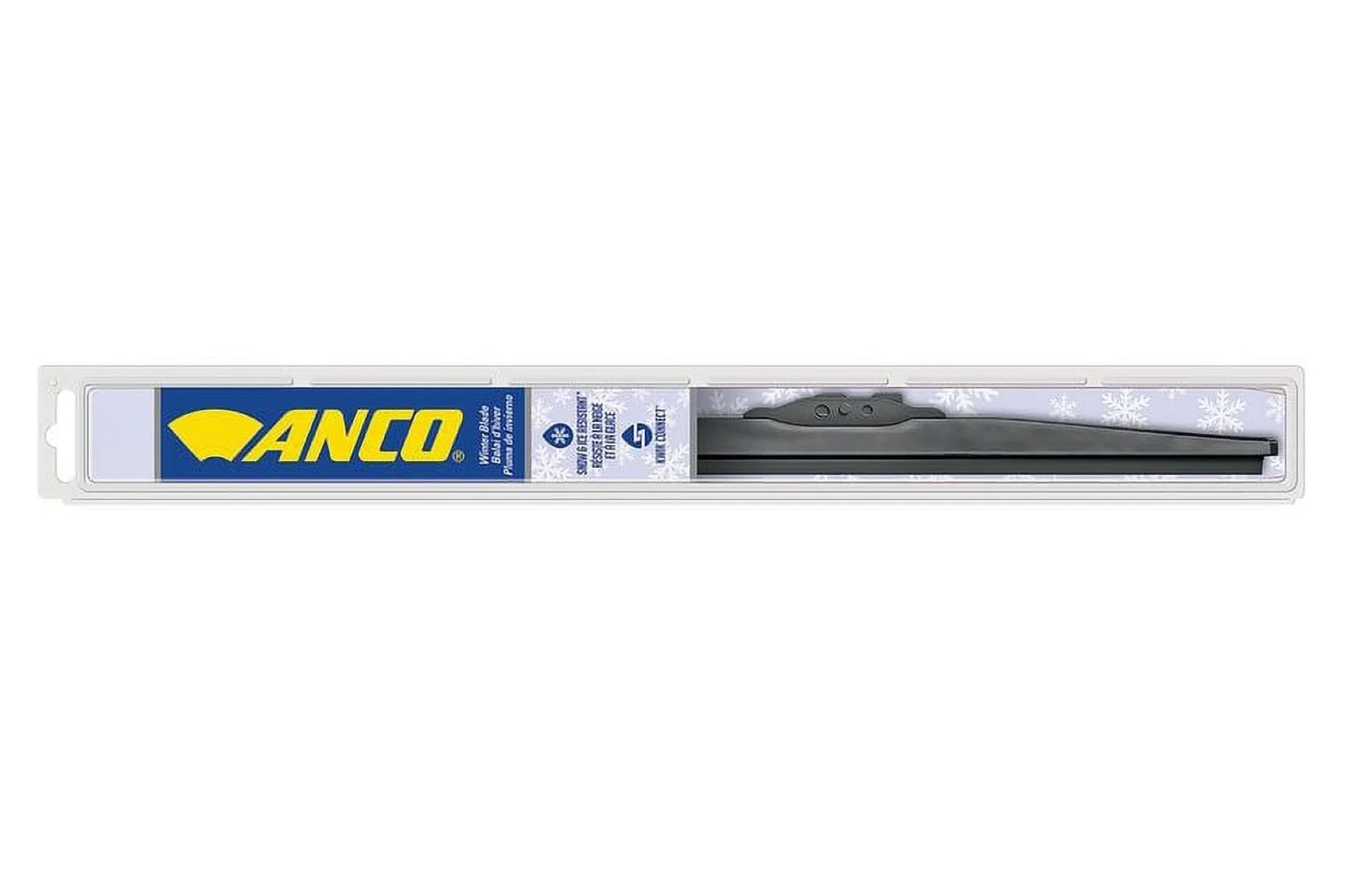

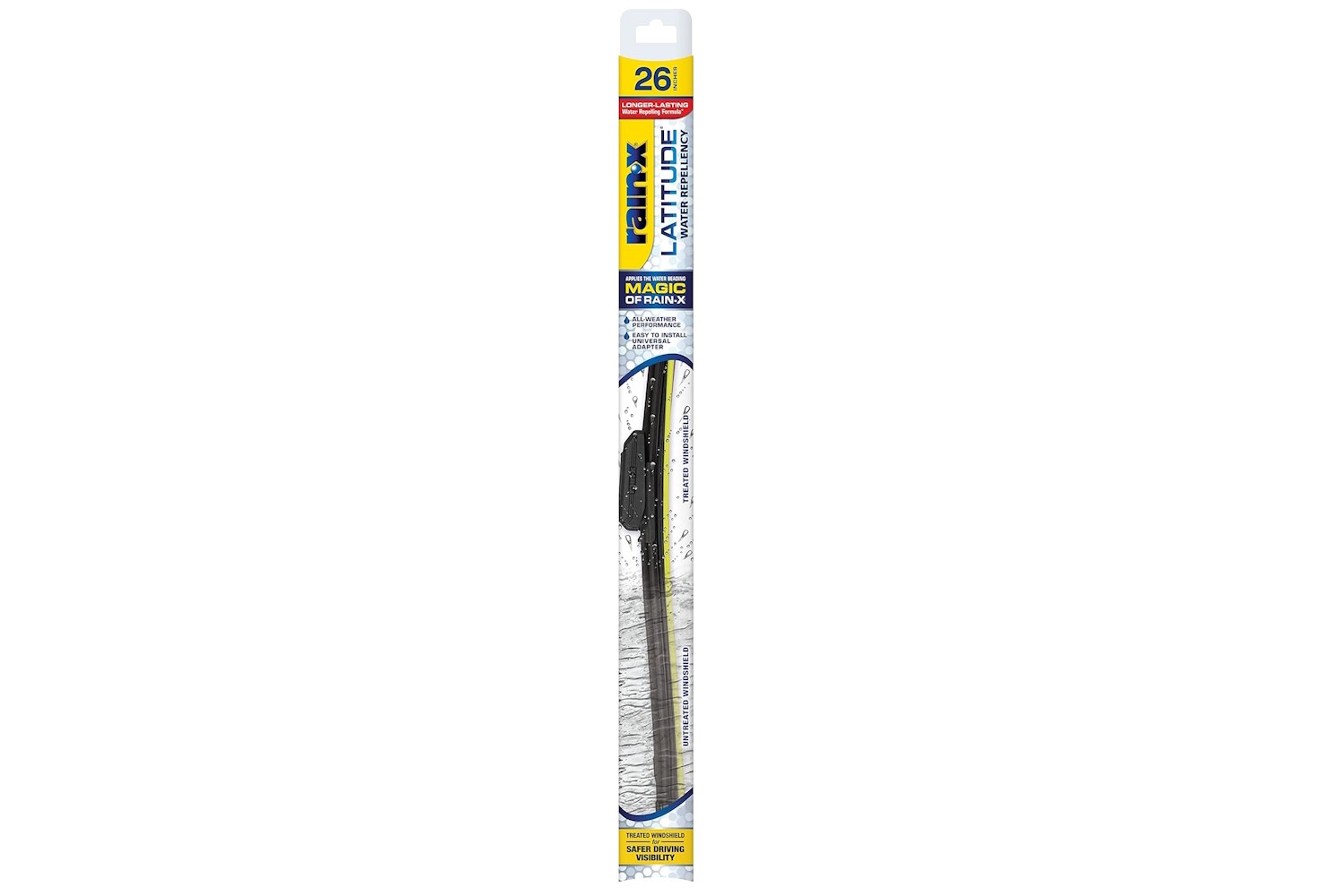
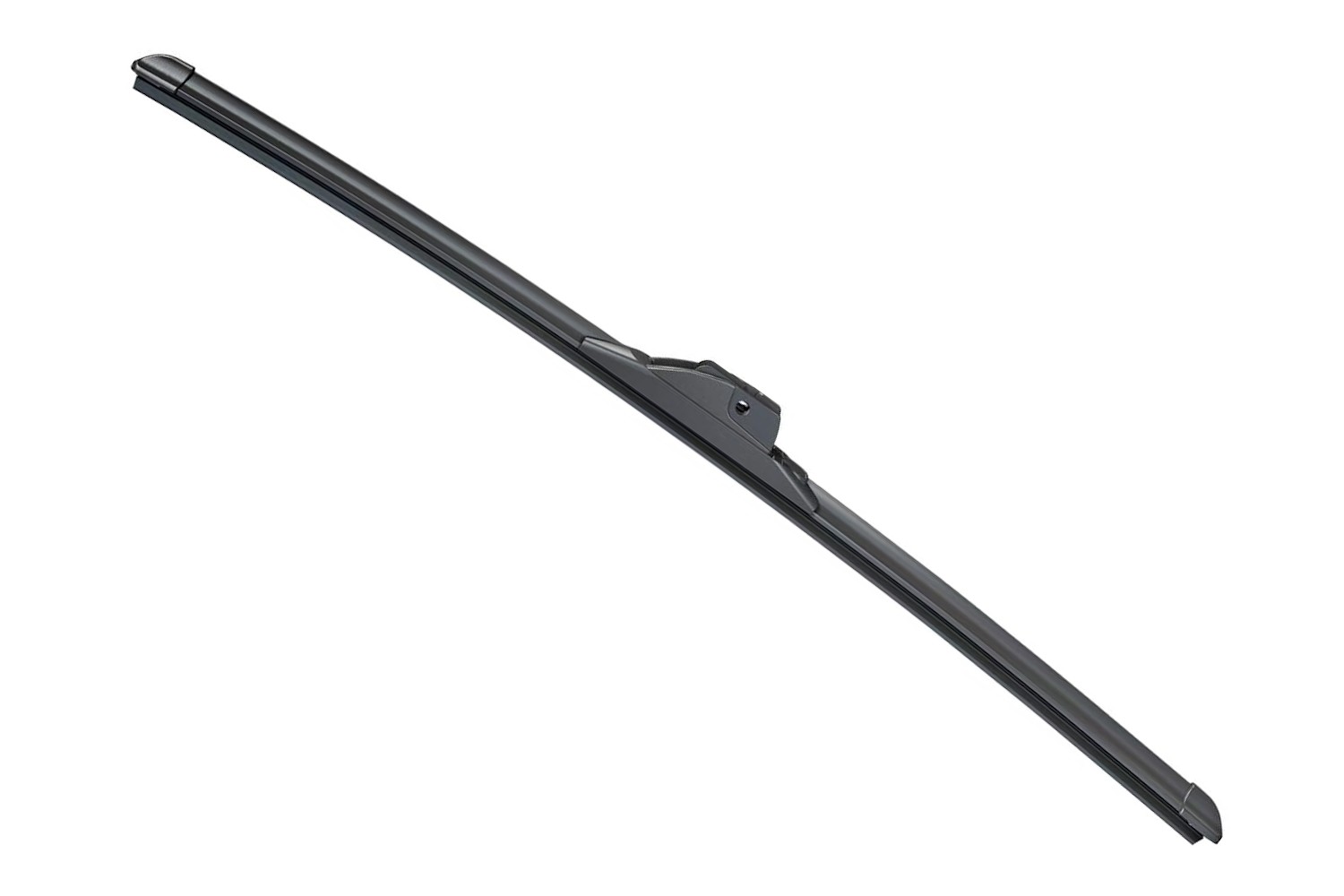
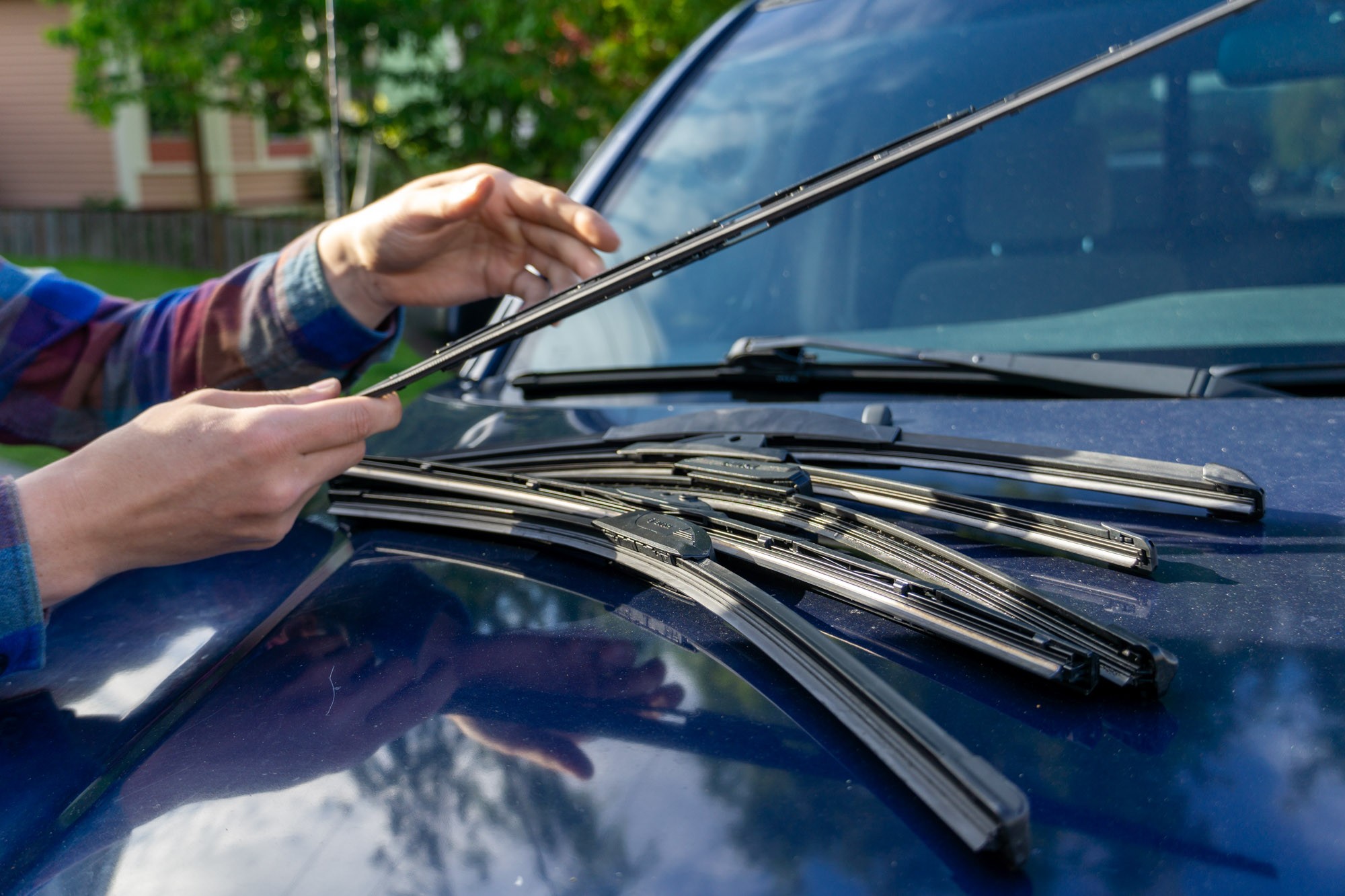
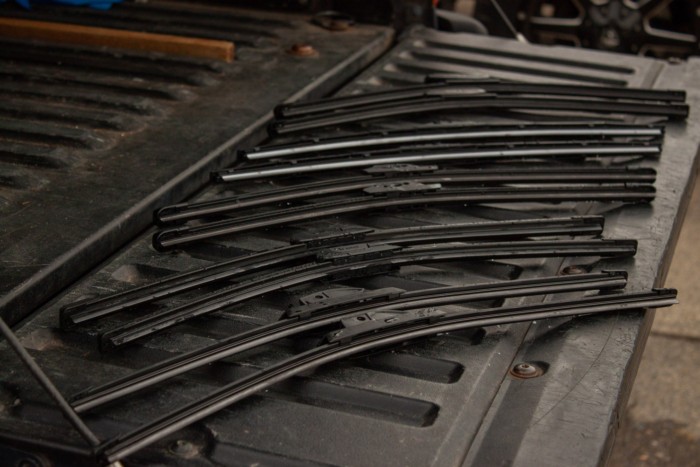

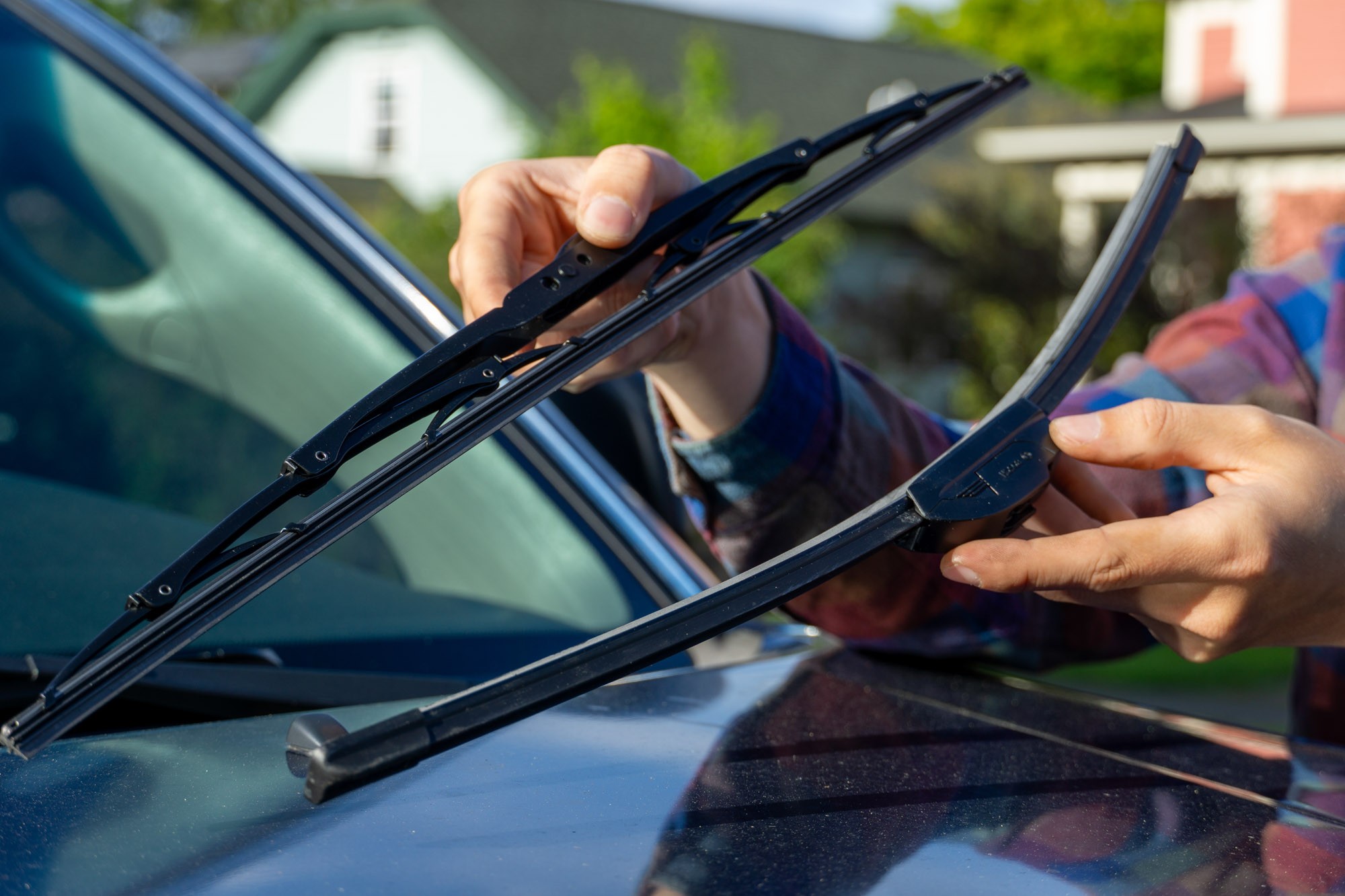
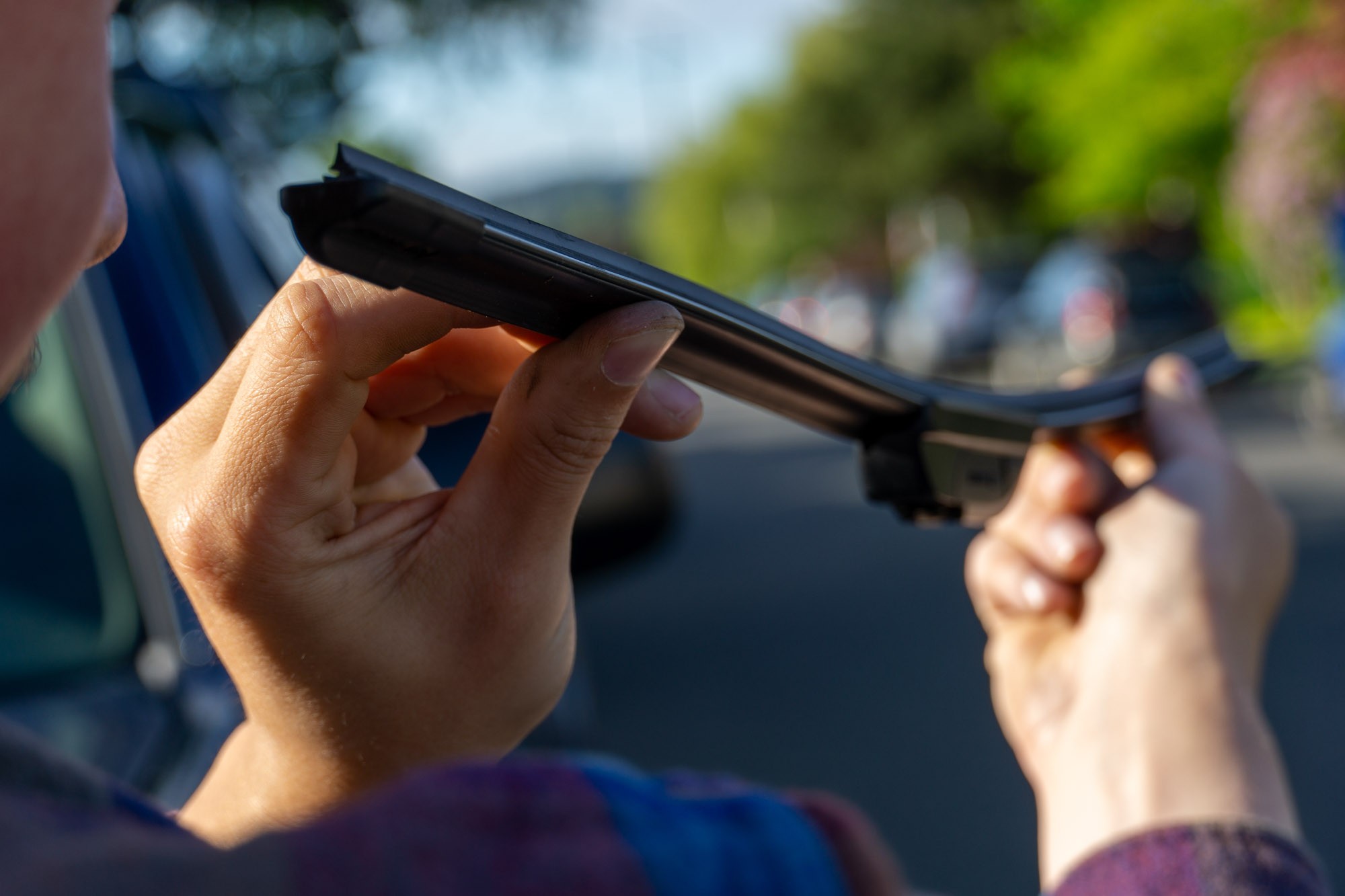
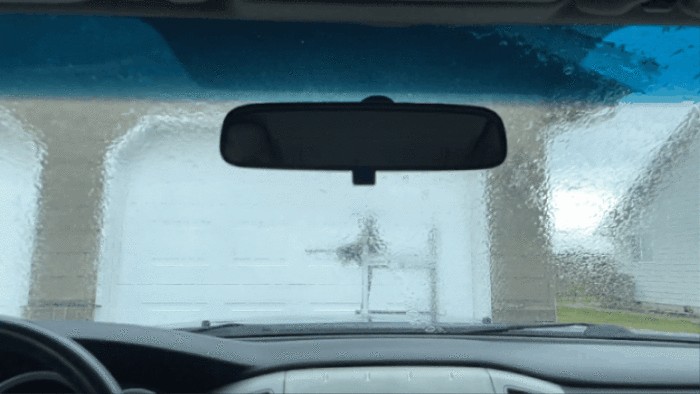

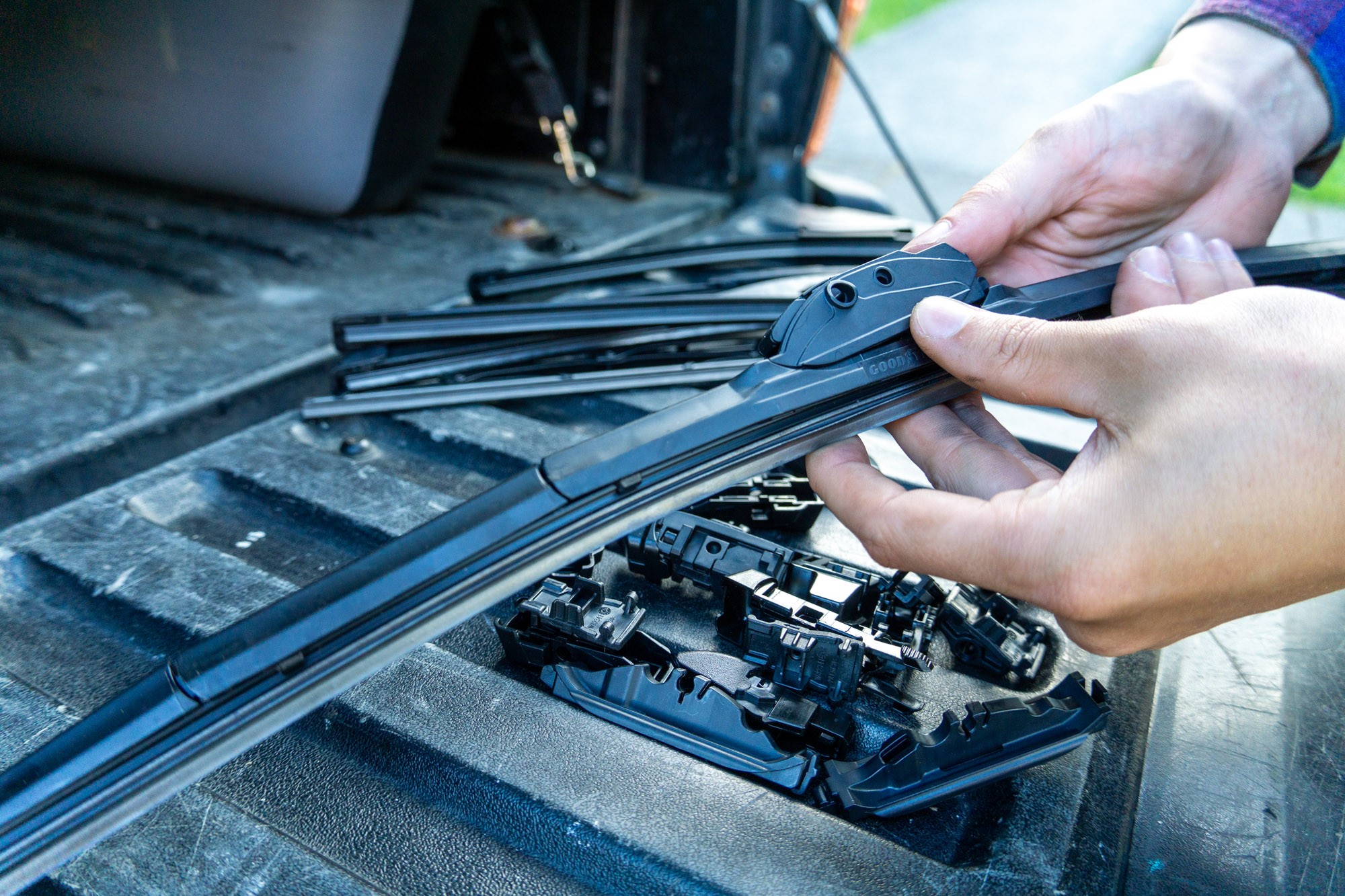
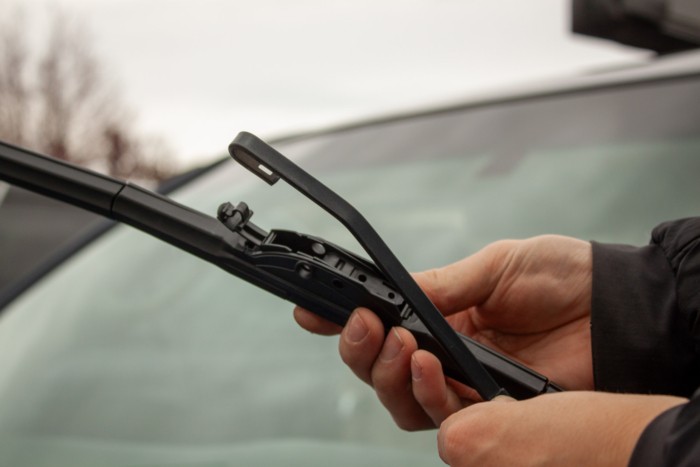
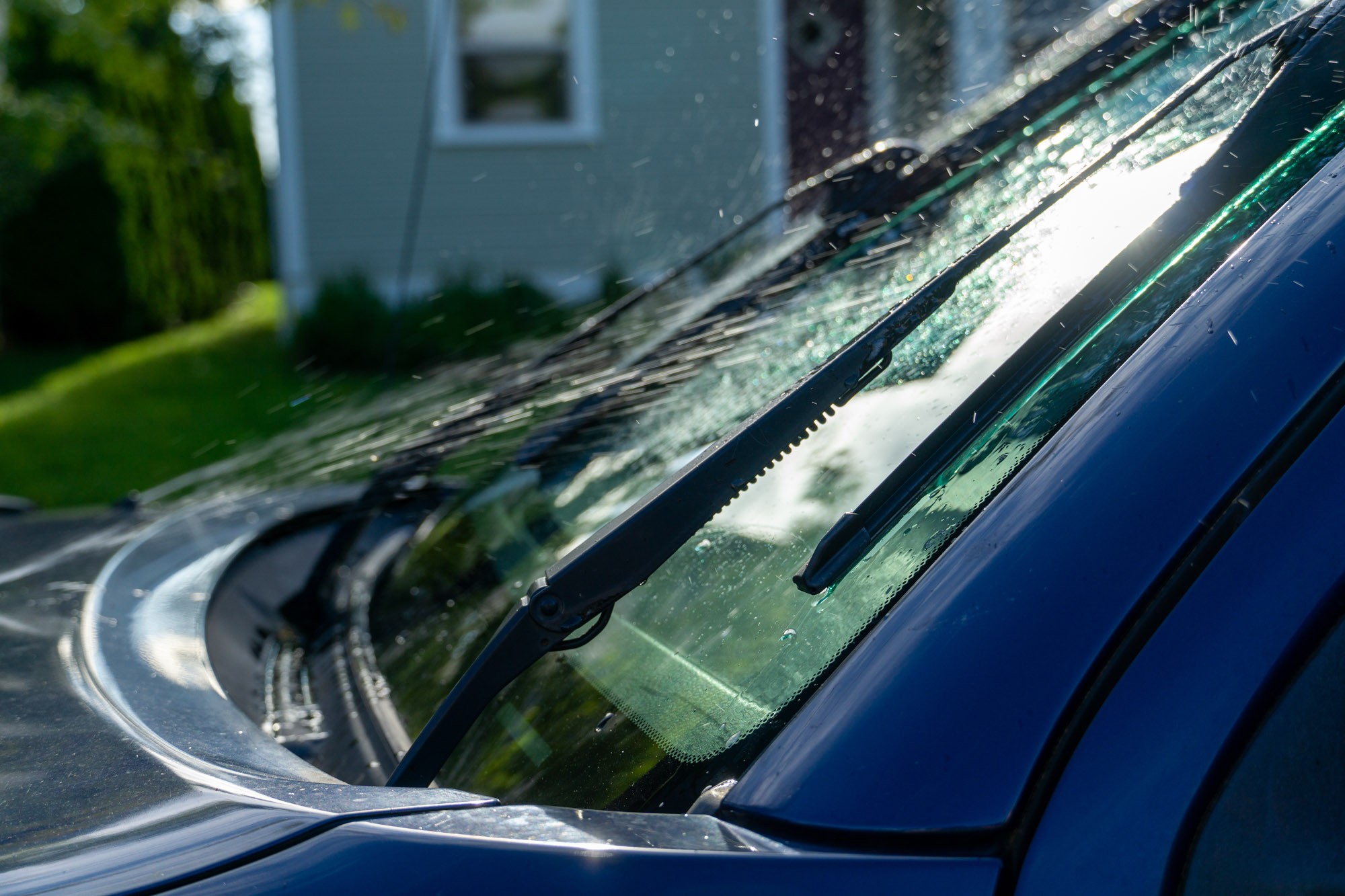
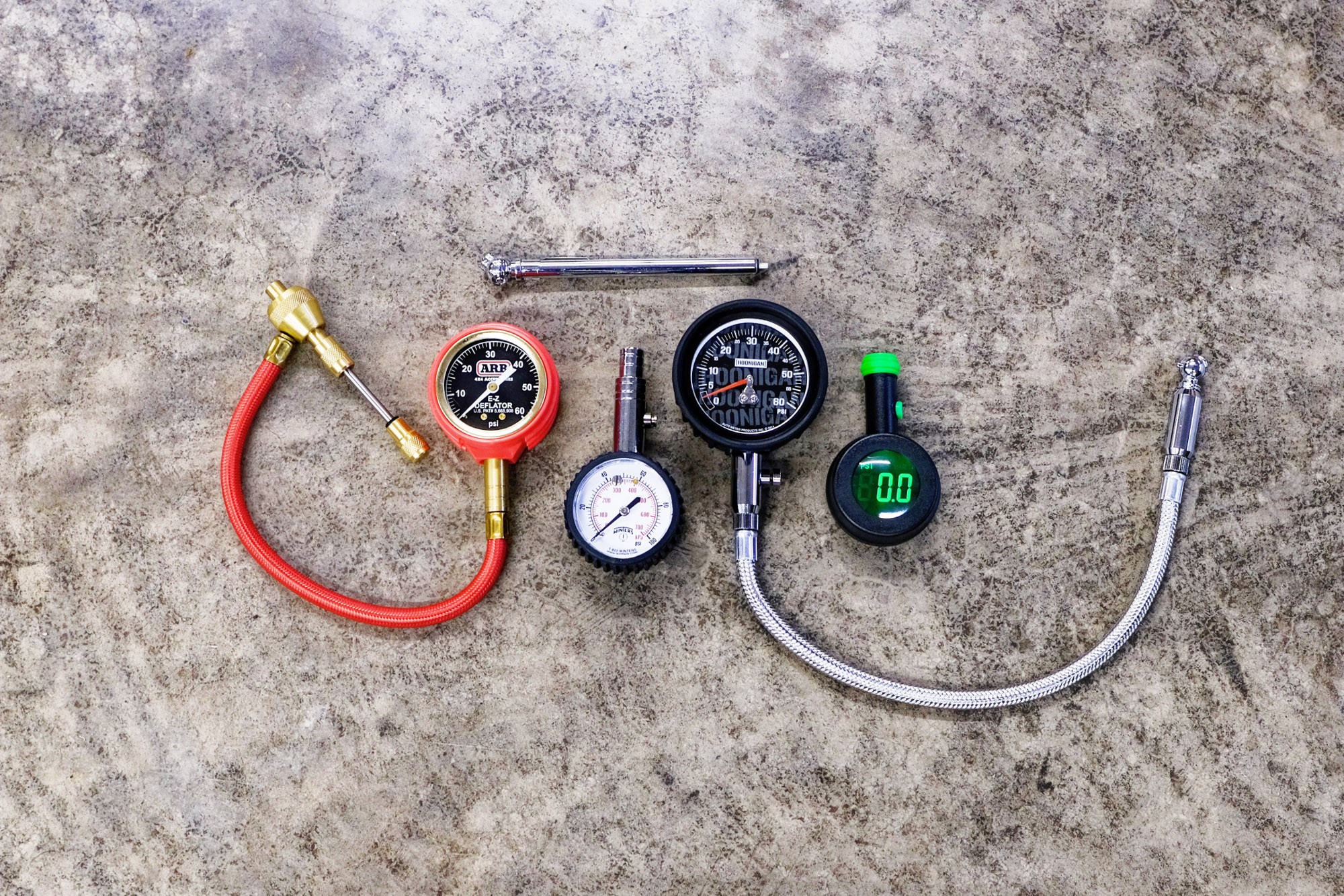
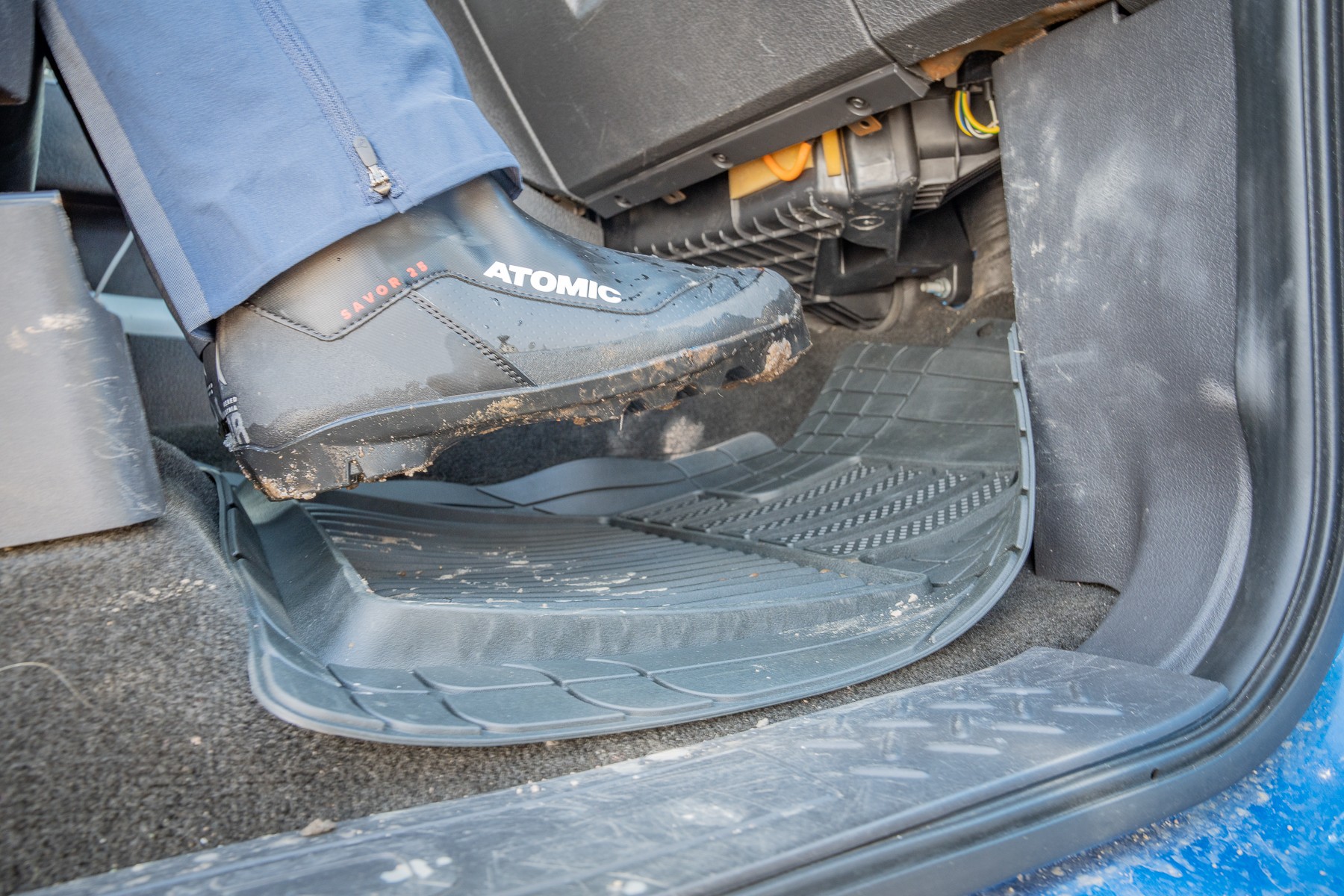
How We Tested the Best Windshield Wipers
To provide you with reliable recommendations for what is best wiper blade, we conducted rigorous testing to separate marketing claims from real-world performance. Our testing process involved both controlled lab-like conditions and extensive real-world driving in diverse weather.
Our Testing Process and Testing Grounds
Our scientific approach to wiper blade testing focused on quantifiable data and repeatable tests. Using our Toyota Tacoma as a test vehicle, we employed sprinklers to simulate various rainfall intensities, from light drizzle to heavy downpours. We utilized slow-motion cameras and audio recorders to meticulously document wiper performance.
Each wiper blade was tested under identical conditions, with consistent water volume and wiper speed. We analyzed video recordings to assess water clearing efficiency, streak-free wiping, and any instances of shuddering or skipping. Audio recordings allowed us to objectively compare the noise levels produced by each blade during operation. For wipers with silicone treatments, we ensured a clean windshield between tests to maintain a consistent testing environment and accurate results.
Installation and removal were also key aspects of our evaluation. We challenged multiple testers to install each wiper set without consulting instructions to assess the ease of installation and the user-friendliness of the mounting mechanisms. This hands-on experience revealed which wipers were intuitive to install and which presented challenges.
Beyond controlled testing, we subjected the wipers to real-world driving conditions across diverse terrains and weather. This included driving through heavy rain on the Olympic Peninsula, snowstorms in British Columbia, and muddy trails leading to remote campsites. This extended real-world use provided valuable insights into wiper durability, longevity, and performance in everyday driving scenarios.
Durability and longevity testing is ongoing, with wipers continuously used on our vehicles under various conditions. Our reviews are regularly updated to reflect long-term performance data and to incorporate new wiper models as they become available.
Our Expert Testers
Leading our wiper testing is Nick Belcaster, based north of Seattle, a region renowned for its frequent rainfall. Nick’s extensive experience driving in wet conditions, coupled with his automotive expertise, makes him ideally suited to assess wiper blade performance. He’s not only replaced countless wiper blades but has also tackled wiper motor replacements due to heavy use, highlighting his deep understanding of wiper system demands.
Our testing team also includes a broad range of GearJunkie editors and contributors with automotive expertise, providing diverse perspectives and feedback from their own vehicle testing experiences, ensuring comprehensive and well-rounded wiper evaluations.
Buyer’s Guide: How to Choose Windshield Wipers
Choosing the right windshield wipers is more than just a last-minute auto parts store decision. It’s about ensuring safety and visibility in diverse driving conditions. Similar to maintaining clear headlights, proper tire inflation, and addressing engine issues, investing in quality windshield wipers is a vital aspect of vehicle maintenance. Understanding what is best wiper blade for your needs requires considering several key factors.
Windshield Wiper Blade Design
Windshield wiper blade design has evolved over the years, with advancements in frame construction significantly impacting performance. Understanding the different wiper blade designs helps in determining what is best wiper blade design for your vehicle.
Traditional Branch Frames
Traditional branch-style wipers are the older, more common design. They utilize a series of metal branches or arms to distribute pressure along the wiper blade. While they can conform to windshield curvature, they often lack consistent pressure distribution, potentially leading to streaking or uneven wiping. Typically constructed from painted or powder-coated steel, branch frames can be susceptible to rust and wear over time, especially in harsh climates.
In snowy and icy conditions, branch-style wipers are prone to ice buildup within the frame structure, which can impede blade movement and cause chattering. However, for drivers in drier regions, branch wipers like the SilBlade Standards or PIAA Super Silicones can be a cost-effective option, particularly for rear window wipers where performance demands are often less critical.
Beam Frames
Modern beam-style wiper blades represent a significant improvement in design and performance. They feature a single, integrated beam structure, often made of spring steel, that provides consistent pressure distribution across the entire length of the blade. This uniform pressure ensures optimal contact with the windshield, resulting in cleaner, streak-free wiping and reduced chattering.
Beam-style wipers also tend to be more aerodynamic, reducing wind lift and noise, especially at higher speeds. In our testing, the Bosch Icons exemplify the advantages of beam design, offering superior flexibility and consistent windshield contact. For most drivers seeking what is best wiper blade design, beam-style wipers are generally the preferred choice.
Hybrid Frames
Hybrid wiper blade frames combine elements of both branch and beam designs. They typically incorporate a branch-style frame with an aerodynamic cover. This cover reduces wind lift and minimizes ice buildup, addressing some of the drawbacks of traditional branch frames while retaining a more conventional appearance. Hybrid frames offer a compromise between the simplicity of branch frames and the performance benefits of beam frames.
Performance
Wiper blade performance is paramount for safe driving. Quantifying wiper performance objectively is crucial for determining what is best wiper blade in terms of effectiveness. Our testing methodology aimed to evaluate wiper performance in a systematic and reproducible manner.
We focused on the primary wipe stroke – the initial sweep that clears the majority of water from the windshield. Key performance indicators included streak-free wiping, absence of shuddering or skipping, and minimal noise during operation. We paid close attention to the blade ends, which often exhibit streaking or incomplete wiping in lower-quality blades.
During the pause between wipes, we assessed how effectively each blade cleared water, noting the windshield clarity before the next spray. Beam-style wipers consistently demonstrated superior windshield contact and more even water removal compared to branch-style frames.
Silicone wipers exhibited a noticeable advantage, with fewer wipes needed to achieve clear visibility. The silicone coating’s water-beading effect further enhanced water removal between wipes, allowing for potentially lower wiper speed settings while maintaining clear vision.
Wiper Compounds
The wiper blade compound, the material of the squeegee element that contacts the windshield, significantly impacts wiping performance and durability. Understanding the different wiper compounds is essential to determine what is best wiper blade material for your needs.
Rubber Blades
Natural rubber has been the traditional wiper blade material for decades and remains widely used. High-quality rubber blades provide effective wiping when properly maintained. However, rubber blades are susceptible to degradation from UV radiation, ozone, temperature extremes, and windshield debris. Dirty windshields are a major contributor to premature rubber blade wear and tear, emphasizing the importance of regular windshield cleaning.
Silicone Blades
Silicone wiper blades, while often pricier than rubber, offer significant advantages in durability and performance. Silicone is inherently more resistant to environmental factors that degrade rubber, such as UV rays, ozone, and temperature fluctuations. Silicone blades also offer the unique benefit of depositing a micro-thin layer of silicone on the windshield with each wipe. This creates a water-repellent surface, enhancing visibility and further improving wiping efficiency.
Wipers like the Rain-X Silicone Endura and PIAA Si-Tech consistently outperformed rubber blades in our tests. Their performance often improved over time as the silicone coating built up on the windshield, further enhancing their water-repelling properties. For drivers seeking superior performance and longevity, silicone blades represent what is best wiper blade compound choice.
Coated Blades
Many wiper blade manufacturers apply coatings to both rubber and silicone blades to enhance performance and reduce friction. Common coatings include Teflon and graphite. These coatings improve wiping smoothness, reduce noise, and can extend blade life by minimizing wear. However, these coatings are not permanent and will gradually wear off over time.
The graphite coating on Rain-X Latitudes contributes to their quiet operation, while the ceramic coating on Trico Silicone Ceramics provides a high-tech friction-reducing layer. While coatings enhance performance, they are an additional feature rather than a substitute for high-quality blade materials like silicone.
Wiper Blade Mounting
Wiper blade mounting systems vary across vehicle makes and models. While the J-hook is the most prevalent attachment type, other common styles include side pins, bayonets, and push-button mounts. Ensuring compatibility with your vehicle’s wiper arm is crucial when selecting new wiper blades.
Wiper blade manufacturers often incorporate multiple adapters into a single mount to accommodate various attachment styles. However, navigating the array of wiper attachments can be complex. Consulting an auto parts store or online resources to confirm compatibility with your specific vehicle is recommended before purchasing wipers.
“Exact fit” wiper blades are also available, designed to meet the original equipment (OE) specifications of your vehicle. These blades eliminate the need for adapters, simplifying the installation process and ensuring a precise fit.
Durability and When to Replace
Even the highest-quality windshield wipers will eventually require replacement. Investing in durable wipers can extend replacement intervals, saving time and money in the long run. Regular wiper blade replacement is a key aspect of vehicle maintenance.
Most wiper blades begin to show performance degradation around the 6-month mark, with replacement typically needed annually. However, premium silicone wipers can often last significantly longer, sometimes exceeding two years with minimal performance loss.
Beam-style wiper designs generally offer greater durability due to fewer moving parts and reduced susceptibility to debris and ice accumulation. Silicone wipers also exhibit superior longevity compared to rubber due to their more stable chemical composition.
Using a water-repellent windshield treatment like Rain-X can significantly enhance wiper blade performance and potentially extend their lifespan by reducing wiper usage in light rain and mist. Regularly cleaning wiper blades to remove debris will also prolong their life and maintain optimal performance.
Replace your wipers when you notice streaking, skipping, chattering, or squeaking during operation. These are clear indicators that the wiper blades are worn and no longer providing adequate windshield clearing.
Price & Value
Windshield wiper prices vary considerably, reflecting differences in materials, design, and brand. Determining what is best wiper blade also involves considering price and value in relation to your driving needs and budget.
Budget
Budget windshield wipers are suitable for drivers in drier climates or for vehicles with infrequent use. These wipers typically feature rubber branch-style blades and offer basic wiping performance. The AERO Voyager J-Hook ($17 per set) offer exceptional value, even incorporating a beam-style design at a budget price point.
Mid-Tier
Mid-tier wipers, priced between $20 and $30 per blade, offer a balance of performance and features. Options like the $26 Rain-X Silicone Endura provide enhanced performance with silicone wiper elements. Beam-style designs become more prevalent in this price range, offering improved windshield contact and wiping efficiency. The Bosch Icon ($30) is a top performer in this category.
Premium
Premium windshield wipers, costing $30 or more per blade, represent the pinnacle of wiper technology. These wipers typically utilize silicone blades and robust beam-style frames, delivering superior performance and longevity. The PIAA Si-Tech ($36) exemplifies premium wiper quality, offering exceptional performance and added features like windshield prep wipes and refill availability. For drivers in demanding conditions where optimal visibility is paramount, premium wipers represent what is best wiper blade regardless of cost.
Frequently Asked Questions
What are the best-rated windshield wipers?
For overall performance and value, we recommend the Rain-X Silicone Endura wiper blades. Their silicone wiper elements provide top-tier performance and deposit a water-repellent coating on the windshield, enhancing visibility in wet conditions. For a slightly higher price, the PIAA Si-Tech wipers offer similar performance with the added benefit of included windshield prep wipes, further enhancing water repellency.
Do expensive windshield wipers make a difference?
While extremely expensive wipers may offer diminishing returns, very cheap wipers will demonstrably underperform. Investing in mid-range to premium wipers, such as the Bosch Icon or Rain-X Latitude , is a worthwhile investment for improved visibility and safety. Generally, pricier wipers utilize beam-style designs and silicone squeegees, both contributing to enhanced performance and extended lifespan, answering the question of what is best wiper blade in terms of balancing cost and performance.
Which wipers last the longest?
Silicone wiper blades significantly outlast rubber counterparts due to their superior resistance to UV radiation, ozone, and temperature extremes. Beam-style designs also tend to be more durable than branch-style wipers due to fewer moving parts. For maximum longevity, we recommend silicone beam wipers like the PIAA Si-Tech, which also offer wiper refills to further extend their usable life.
What is the average life of a wiper?
The average windshield wiper lasts approximately one year under normal use, and potentially longer with regular windshield cleaning and in milder climates. Higher-end silicone wipers can often exceed this lifespan. Streaking or noisy wiper operation are clear indicators that replacement is due.
Are silicone wiper blades better than rubber?
For optimal all-weather performance, silicone wiper blades are generally superior to rubber. They provide smoother, streak-free wiping and significantly longer lifespan. However, in extremely cold and icy conditions, rubber blades may be slightly more resilient to tearing when encountering ice buildup, making them a potentially better choice for dedicated winter use in some regions. Ultimately, for most drivers seeking what is best wiper blade, silicone represents the superior material choice.
The Best Tire Pressure Gauges of 2024
